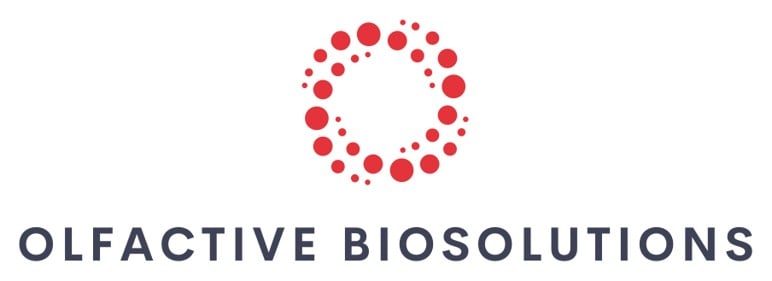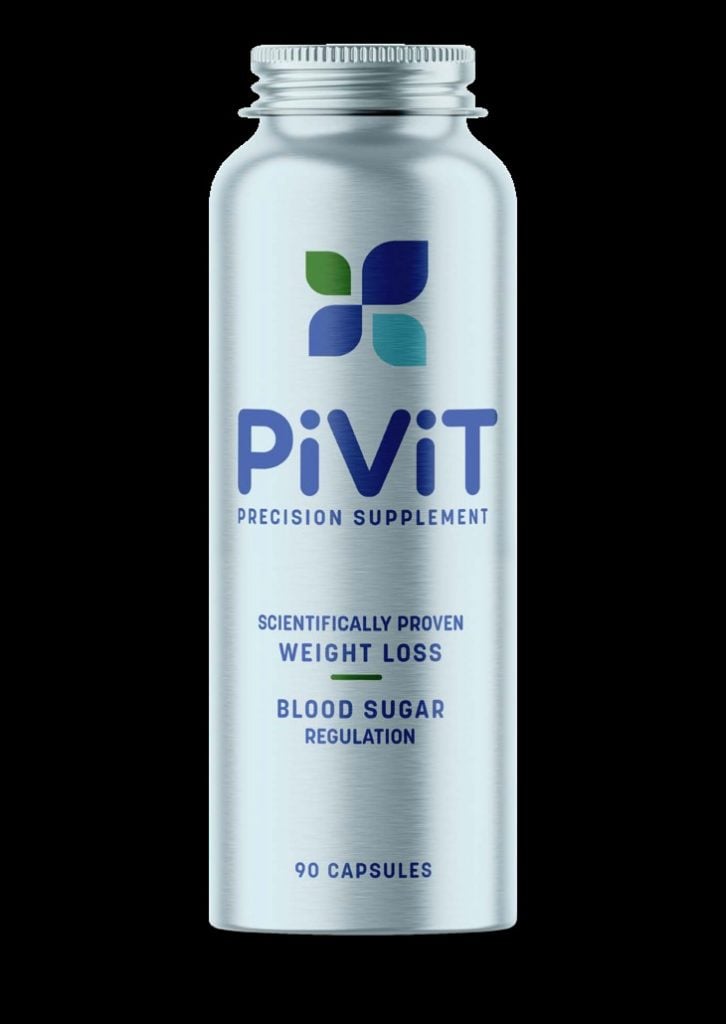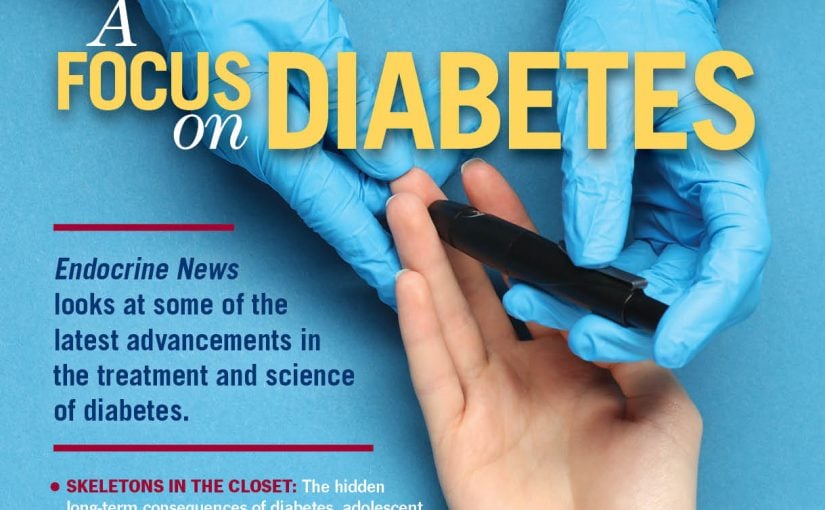An Endocrine News roundup of the week’s pharmaceutical news, breakthroughs, and general information. *
New OTC Weight Loss Pill Granted Patent
On May 6, Olfactive Biosolutions was granted a patent for formulations of food molecules that cause significant weight loss when taken as a daily pill.
The company’s Pivit supplement induces the simultaneous secretion of GLP-1, PYY, and GIP, in U.S. patent US 12,290,550, Compositions for Treating Endocrine Diseases and Disorders. The company now has four granted patents that cover weight loss and blood sugar regulation.

The patent covers compositions of food molecules that together act as an oral small molecule triple receptor agonist, causing increased levels of GLP-1, PYY, and GIP hormones clinically proven to lessen appetite and slow gastric emptying, and specifically relates to oral formulations of natural food molecules for treating diabetes mellitus and obesity by modulating ectopic olfactory, taste and related receptor activity.
Olfactive Biosolution’s first product under this patent is Pivit, a GLP-1 / PYY / GIP triple receptor agonist, similar to the class of drugs that have become blockbusters because of their weight-loss effects. But the GLP-1s on the market now are expensive, must be kept refrigerated, and must be injected. The Pivit pill that produces similar or better results has the potential to become far more widely used, and since Pivit comprises common food molecules it is much cheaper to manufacture. Pivit can be taken without food and water restrictions. Pivit demonstrates statistically significant weight loss results and a safety profile superior to injectable GLP-1 medicines.
About 40% of Americans are obese, and more than 15% have diabetes, most of whom have type 2, according to the Centers for Disease Control and Prevention. In the coming decades some 700 million people worldwide will have type 2 diabetes and more than 1 billion will be affected by obesity.
“We are pioneering this exciting new space of the pharmacodynamics of natural food ligands and their effect on receptors, to bring better health to a large number of people and to address a wide range of chronic conditions,” said Nils Lommerin, President and CEO of Olfactive Biosolutions. “With the Pivit pill we can reach underserved populations around the world and inexpensively bring better health outcomes to millions and millions of people.”
“Olfactive Biosolutions has taken a novel approach to GLP-1-mediated weight control by using its technology to identify the foods we ingest that actually activate production of GLP-1 and other mediators that signal satiety,” said Dr. James Broach, Distinguished Professor and Chair, Department of Molecular and Precision Medicine at Penn State University and a noted expert on olfactory receptors. “As a result, the company can now provide directly to consumers an inexpensive and safe product that can broadly address the epidemic of diabetes and obesity,” he said.
Olfactory and taste receptors are not just in the nose and tongue, but everywhere in the body – including the lungs, the vasculature, the gut, brain, heart and kidneys.
These ectopic receptors influence GLP-1, PYY and GIP secretion, serotonin and dopamine secretion, blood pressure, muscle regeneration, bone remodeling, bronchodilation, kidney function and many other physiological pathways.
This approach promises the ability to bring health and wellness to large parts of the globe. Food molecules are cheap and plentiful and unlike pharmaceuticals, they have no known side effects and can be consumed on a long-term basis.
Highlights
Innovative Mechanism of Action: Pivit is a groundbreaking triple agonist targeting GLP-1, PYY and GIP, synergistically enhancing insulin secretion, improving glucose homeostasis, and reducing appetite and food noise.

Significant Effectiveness: Consumer trials demonstrate Pivit’s substantial efficacy, evidenced by notable reductions in body weight and improved glycemic control.
No Known Side Effects: Pivit has no known side effects. Side effects of injectable obesity drugs include diarrhea, indigestion, constipation, nausea and vomiting.
Broad Health Potential: Beyond glycemic control and weight reduction, Pivit shows promise in mitigating cardiovascular risk factors and addressing hypertension. Pivit could have potential benefits in positively affecting other components of the metabolic syndrome such as high triglycerides, low high-density lipoprotein cholesterol, increased blood pressure, and increased fasting sugars.
Pivit will be available as a supplement sold direct to consumers beginning September 2025. Food and beverage manufacturers will also add Pivit Weight Management to their consumer products, bringing benefits consistent with current prescription-only pharmaceuticals.
Osteoboost Health Launches FDA-Cleared Prescription Wearable Device for
Low Bone Density
On May 7, Osteoboost Health, Inc. announced the nationwide availability of
Osteoboost, the first and only FDA-cleared prescription medical device for low bone density. Osteoboost represents a novel, protective and preventative approach to bone health at a time when tens of millions are left without effective options.
As new generations reach menopause and retirement, the idea of “aging gracefully” is evolving into a vision of longevity centered on strength and an active lifestyle. Bone health is pivotal to this shift. Osteoboost offers hope to millions with low bone density, helping reduce fracture risk that threatens mobility and independence.

Osteoboost is a brand-new wearable that bridges the gap between next-generation consumer health technology and rigorously tested medical innovation. Designed for effortless, at-home use, this clinically proven device delivers targeted vibration therapy directly to the spine and hips: areas at high risk for osteoporotic fractures. More than just a consumer-friendly wearable, Osteoboost is an FDA-cleared medical device, designated a Breakthrough Device by the FDA and approved through the
De Novo pathway. Its patented vibration technology, precisely calibrated for bone health, was clinically validated in a gold-standard randomized controlled trial to significantly slow the loss of vertebral bone density and strength.
While osteoporosis often receives the most attention, over half of all fragility fractures happen during osteopenia, the precursor to osteoporosis. In the United States, 54% of postmenopausal women are osteopenic. Until now, treatments have focused on medications typically only prescribed in the osteoporosis stage and usually not offered until after a bone fracture.
Leading Osteoboost is CEO and Endocrine Society member Laura Yecies, a seasoned entrepreneur with over 30 years of building and scaling companies, including selling her prior startup to Apple.
“The longevity conversation is everywhere, but people rarely mention bone health even though it is fundamental to aging with confidence,” says Yecies. “Osteoboost empowers people to lead longer, stronger, and more active lives. And while the belt is sophisticated medical technology rigorously tested and validated for efficacy, the treatment is so easy – 30 minutes a day of gentle vibration therapy that can be done while walking, cooking, or other daily activities.”
A gold-standard, double-blinded, placebo-controlled clinical trial at the University of Nebraska Medical Center demonstrated that Osteoboost slowed bone density and strength loss in postmenopausal women with osteopenia who used it at least 3 times per week:
● 85% reduction in the loss of bone density in the spine
● 83% reduction in the loss of bone strength in the spine
● 55% reduction in the loss of bone density in the hip
Before today’s launch, over 1,000 physicians, including those at 30+ leading academic medical centers, had already prescribed Osteoboost—highlighting both patient demand and the vast treatment gap.
● More women will suffer an osteoporotic fracture than experience a heart attack, stroke, and breast cancer combined.
● Osteoporotic fractures cost the U.S. healthcare system $46 billion annually.
● Calcium, vitamin D, and exercise alone are often not enough to prevent bone loss in high-risk individuals.
“It’s been a long time since we’ve seen any new innovation for bone health, and yet every day I see patients who are terrified of the risks they face just walking down the street,” said Dr. Yevgeniya Kushchaeva, clinical director of University of South Florida Health Adult Endocrinology, and Medical Director of Adult Osteoporosis Program. “Osteoboost did this the right way. They spent years investing in the clinical
trial and FDA approval processes – not an easy feat even for larger pharmaceutical companies.”
Kushchaeva continues: “The fact that the trial showed such strong results, and had no serious adverse events from the device, plus had over 80% patient compliance, all inspires tremendous confidence. My patients are already asking me about this, I’m actively prescribing it, and I’m looking forward to seeing
their results.”
To increase accessibility, the company is offering online prescription consultations through its partnership with Beluga Health. Patients now have the flexibility to obtain a prescription through their personal physician or opt for the convenience of online prescribing from home. This streamlined process removes delays, making it easier and faster for individuals to access new treatments and take
proactive steps toward improving their bone health. The company also announced new strategic investments from AARP, Harvard Business School Angels,
and She’s Independent, plus a follow-on investment from Esplanade Healthtech Ventures.
Osteoboost recently secured its sixth U.S. patent, further strengthening its intellectual property portfolio and leadership in vibration technology. Last July, Osteoboost Health acquired Wellen, an online exercise and fall prevention platform designed for women with low bone density.
*Inclusion in Pharma Fridays does not suggest an endorsement by Endocrine News or the Endocrine Society.

